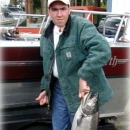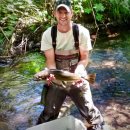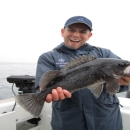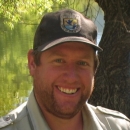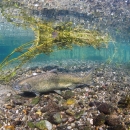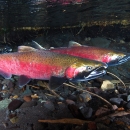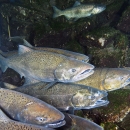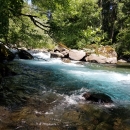The Mitchell Act was authorized by Congress in 1938 to provide funds for hatchery programs and fish passage fish passage
Fish passage is the ability of fish or other aquatic species to move freely throughout their life to find food, reproduce, and complete their natural migration cycles. Millions of barriers to fish passage across the country are fragmenting habitat and leading to species declines. The U.S. Fish and Wildlife Service's National Fish Passage Program is working to reconnect watersheds to benefit both wildlife and people.
Learn more about fish passage facilities to mitigate for declining salmon populations due to irrigation diversions, water pollution, logging, and hydropower development in the Columbia River Basin. Funds are distributed to treaty tribes, states, and federal agencies from the National Oceanic and Atmospheric Administration (NOAA) Fisheries. For National Fish Hatcheries (NFHs) in the Columbia River Gorge Complex, Mitchell Act funds are utilized by four facilities (Carson, Eagle Creek, Little White Salmon, and Willard NFHs) for rearing programs that produce Coho, fall Chinook, and spring Chinook salmon for commercial, tribal, and recreational harvest opportunities. Additionally, funds support egg and juvenile transfer programs, the collection of broodstock broodstock
The reproductively mature adults in a population that breed (or spawn) and produce more individuals (offspring or progeny).
Learn more about broodstock , maintenance of facilities, and monitoring and evaluation (M&E) of the programs by the Columbia River Fish and Wildlife Conservation Office. In this report, results from the M&E programs conducted at each of the four facilities over the past twelve years is discussed including broodstock need, juvenile production levels, size at release data, marking and tagging information, detection rates at Bonneville Dam, juvenile survival, adult returns and smolt-toadult survival rates inferred from coded-wire tag recoveries, adult age structures, and special studies which are supported by Mitchell Act funds. Recommendations for future studies are also discussed.
Publication date
Type of document
Annual Report
Facility
Media Usage Rights/License
Public Domain
Program
Species
FWS Focus
FWS and DOI Region(s)

